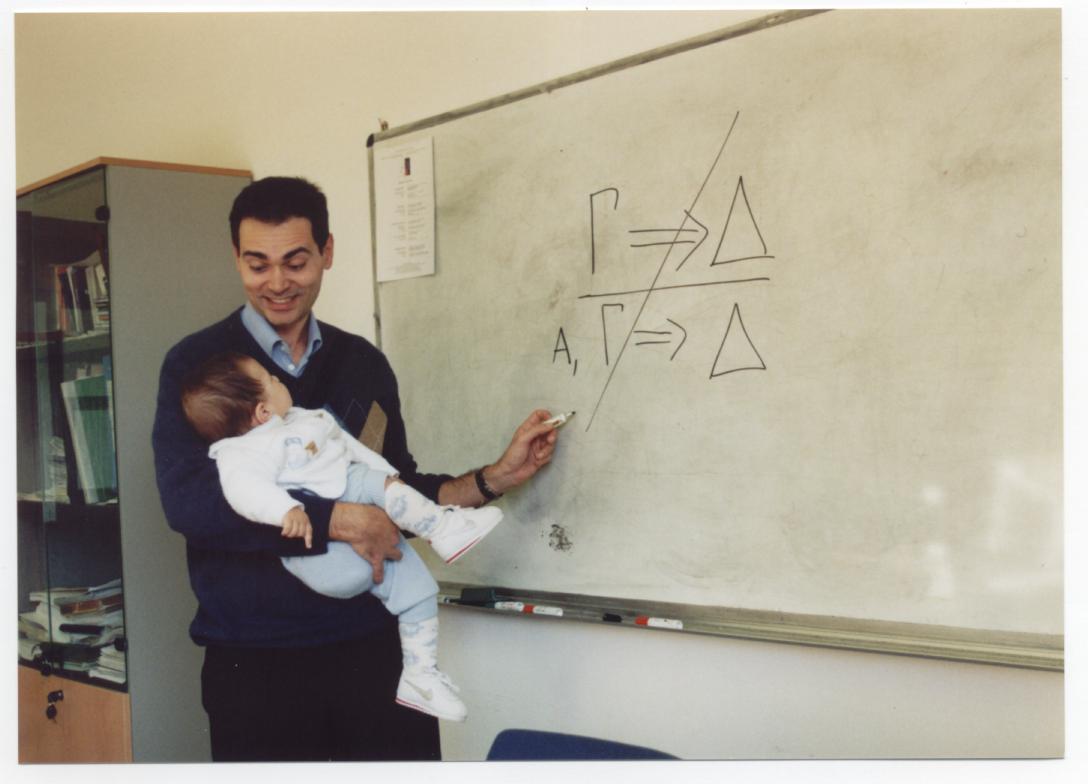
Substructural Logics
Francesco Paoli
Department of Philosophy
University of Cagliari - Italy
Substructural logics owe their name to the fact that an especially immediate way to introduce them is by means of sequent calculi à la Gentzen where one or more of the structural rules (weakening, contraction, exchange) are suitably restricted or even left out. Quite independently of the proof-theoretical framework within which they are presented, however, substructural logics differ from classical logic in that they offer a more “fine-grained” analysis of logical constants: e.g. while classical logic has a single conjunction and a single (inclusive) disjunction, substructural logics can distinguish between a lattice and a group version for each of the two connectives. The topic of substructural logics links up nicely with research streams in universal algebra (e.g. the theory of residuated lattices), theoretical computer science (e.g. the study of parallelism), theoretical linguistics (e.g. type-theoretical grammars).
The aim of this tutorial is to present the main ideas of substructural logics. A tentative work plan could be as follows:
First seminar. First hour: historical overview and philosophico-motivational remarks. Second hour: sequent calculi and cut elimination for the main substructural logics.
The aim of this tutorial is to present the main ideas of substructural logics. A tentative work plan could be as follows:
First seminar. First hour: historical overview and philosophico-motivational remarks. Second hour: sequent calculi and cut elimination for the main substructural logics.
Second seminar. First hour: Hilbert-style calculi: L-theories, deduction theorems, Lindenbaum-style results. Second hour: generalizations of sequent calculi: hypersequents, multilateral sequents, structures, display logic.
Third seminar. First hour: algebraic semantics: *-autonomous lattices and their properties. Second hour: relational semantics: Routley-Meyer models and general phase models.
References:
K. Dosen, P. Schroeder-Heister (Eds.), Substructural Logics, Oxford University Press, Oxford, 1993.
G. Restall, An Introduction to Substructural Logics, Routledge, London, 2000.
F. Paoli, Substructural Logics: A Primer, Kluwer, Dordrecht, 2002.
H. Ono, “Substructural logics and residuated lattices: An introduction” in Trends in Logics: 50 Years of Studia Logics, V.F. Hendricks et al. (Eds), Kluwer, Dordrecht, 2003, pp. 177-212.
Third seminar. First hour: algebraic semantics: *-autonomous lattices and their properties. Second hour: relational semantics: Routley-Meyer models and general phase models.
References:
K. Dosen, P. Schroeder-Heister (Eds.), Substructural Logics, Oxford University Press, Oxford, 1993.
G. Restall, An Introduction to Substructural Logics, Routledge, London, 2000.
F. Paoli, Substructural Logics: A Primer, Kluwer, Dordrecht, 2002.
H. Ono, “Substructural logics and residuated lattices: An introduction” in Trends in Logics: 50 Years of Studia Logics, V.F. Hendricks et al. (Eds), Kluwer, Dordrecht, 2003, pp. 177-212.